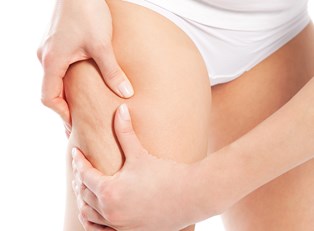While relatively benign, stretch marks can prove to be an embarrassing and unsightly problem for lots of people. Some people assume that as they grow older and their skin begins to sag that these are unavoidable, but in reality there are some tangible measures you can take against them. Here’s a look at why stretch marks accompany old age and what products to look for in treating them.
Stretch Marks as a Sign of Aging
In most contexts, stretch marks indicate unhealthy skin. There are some notable exceptions, such as stretch marks during pregnancy or puberty, but for the most part they demonstrate skin that has lost its elasticity due to a lack of collagen production. One common reason why a person’s body does not produce enough collagen is due to the aging process. While this process cannot be stopped entirely, finding a good anti-aging product can help slow things down and reduce the appearance of stretch marks.
Tips for Dealing with Stretch Marks
Although collagen production naturally decreases with age, there are some things you can do to avoid unsightly stretch marks.
Some people have great success with anti-aging products, since many of these are designed specifically to boost your body’s production of collagen. However, be cautious of products that promise to do unbelievable things. Anything promising a quick fix or unbelievable results is probably not worth the money. A good anti-aging product will promote good skin health, but none will be able to completely erase your problems on its own.
When looking for a specific product, there are a few ingredients necessary for best results. Retinol is derived from vitamin A and is included in numerous anti-aging products for its ability to promote collagen production and reduce other aging signs like wrinkles. While there are multiple ingredients that can accomplish this, most professionals agree that retinol is the best at getting the job done. Finally, look for products that contain antioxidants like vitamin C and the enzyme CoQ-10. Both protect your skin from age-related damage and in some cases can even reduce damage that has already been done.
In addition to looking for external solutions to your stretch marks, it’s also important to treat the problem internally by staying hydrated. Not drinking enough water can cause the outermost layer of your skin, the epidermis, to lose its sheen and elasticity. This can lead to sagging and stretch marks. There is no professional consensus on how much water you should be getting each day, but the classic “eight glasses a day” should be enough to keep you hydrated.



